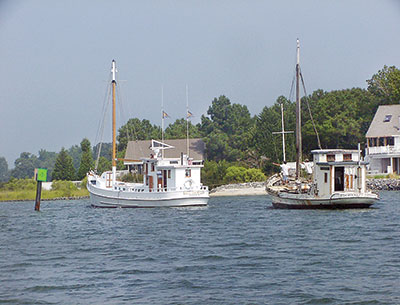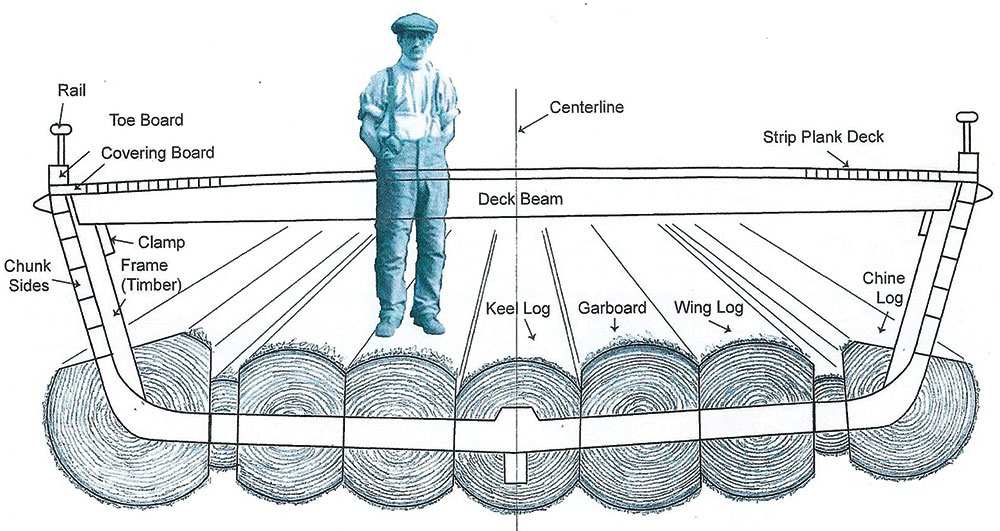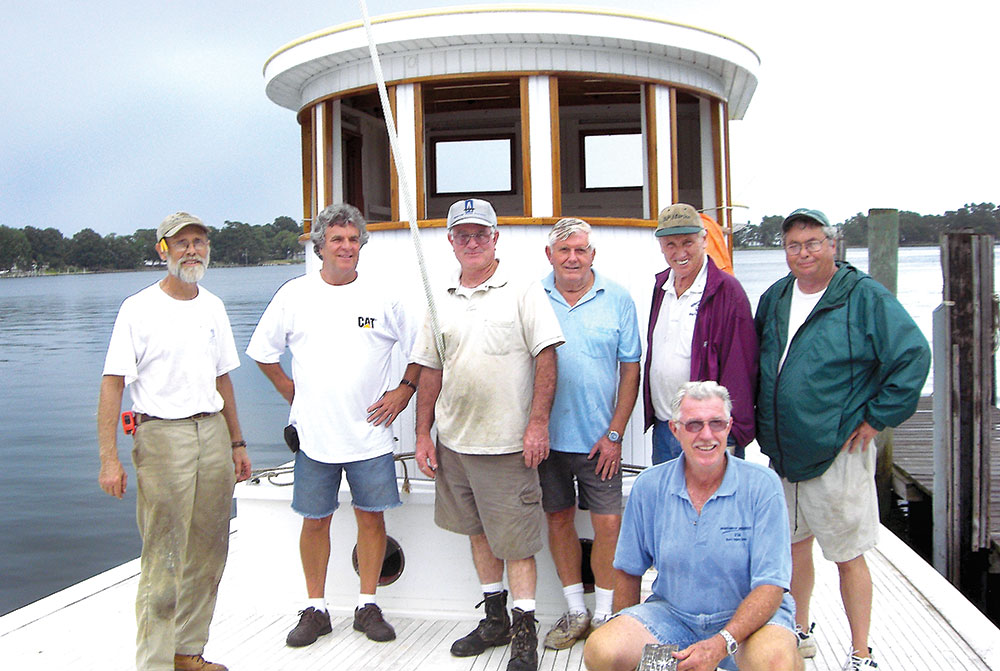
The log hull buyboat F.D. Crockett (1924) is a century old this year and still going strong!
The Deltaville Maritime Museum (DMM) is conducting a 100th birthday party on June 15 and 16 at the museum to celebrate the life of the boat and to establish an endowment to further the maritime life of one of the most unique style of deck boats on Chesapeake Bay.

F.D. Crockett and Old Point (1909), owned by the Chesapeake Bay Maritime Museum (CBMM) in St. Michaels, Md., are the last two large log hull deck boats alive that were built specifically for motor power. The Old Point plans to attend the birthday celebration.
When the first English settlers arrived on the bay in 1607, Native Americans were moving about in dug-out log canoes. The dug-out was the start of an American boatbuilding era that spanned over three centuries of building boats out of logs culminating in their use as primary vessels for travel and commerce on Chesapeake Bay.
The F.D. Crockett was built near the end of the log boat era and it is believed to be one of the largest ever built specifically for internal combustion engine. The launching of the F.D. Crockett on Chisman Creek in York County in 1924 was the grand finale of the log canoe era in America!
During the transition from wind and sail power to motor-powered boats, there was a narrow window (1900s into 1920s) when traditional log canoe builders, particularly in the Poquoson and Dare areas in York County, were able to compete against builders across the bay who built large deck boats powered by motors and built out of planks. F.D. Crockett and Old Point are amazing examples of the few boats built in that short window in bay maritime boatbuilding history.

Alexander Gaines, a farmer/boatbuilder, built the log hull and when it was completed it was floated across the creek to Smith Marine Railway in Dare where John and Kirby Smith and crew finished off the decks, top work and house/pilothouse.

The boat was built and named for Ferdinand Desota Crockett of Poquoson who used the boat in freight and agriculture endeavors. It was used to haul hogs, chickens, onions, potatoes, watermelons and lumber from up and down the length of the bay. Over the life of the boat, it was also used as a buyboat to buy oysters, crabs and fish from area watermen.
In the last years of its commercial life, the F.D. Crockett was worked in Virginia’s commercial crab dredge fishery. The low-sided log boat made it an ideal platform for hauling dredges up over the sides and onto the deck. Virginia’s winter crab dredge fishery was banned for conservation reasons by the Virginia Marine Resources Commission in 2008, closing out one of the last fisheries that supported large wooden deck boats on the bay.
Even before then, the F.D. Crockett had fallen into disrepair. With the encouragement of the late “Kaptain Krunch” Steve Smith, the museum accepted the donation of the boat in 2005 from Ron Turner with a horde of soothsayers across the bay questioning the museum’s ability and means to support the restoration of such a boat.

The reconstruction came about because the community embraced the project with donated funds, thousands of hours of donated boatbuilding talent and free railway time by local boatyards. Longtime boatbuilder and home contractor John England spearheaded the project as the project manager.
England had a lifelong love of boatbuilding, sailing and small boats and moved to Urbanna as a boatbuilder. Over the years he had built a number of sailing craft. In 2002, England was helping with the completion of the book “Chesapeake Bay Buyboats” that was published in 2003. He along with several others from Urbanna went down to see and photograph the F.D. Crockett.
“I wasn’t there when they brought the boat to Deltaville,” said England. “I had seen her in 2002 for the first time and I knew she was a unique and special boat. When they brought her to Deltaville in 2005 and I saw her again, I knew it was going to take a major restoration to bring her back to life.

“What brought me to the decision to be a part of the restoration was the fact she was a log boat,” he said. “If she had been a plank built boat, I don’t think I would have been a part of it. The challenge to restore such a unique boat brought me onboard.”
The restored hull of the F.D. Crockett was dedicated in 2011 to “the boatbuilders and watermen of Chesapeake Bay and the families who kept the history alive.” Thousands of volunteer labor hours brought her to National Landmark status in 2012.
The vessel is now a maritime ambassador for the museum and travels annually to different ports as an example of that watermark era in bay boatbuilding history.

The local businesses that are sponsoring the 100th year anniversary celebration of the F.D. Crockett are John M. Barber Art, Malise Marine, Brown’s Marine and Friday’s Marine, The Galley Restaurant, Bay Freight Inc., Deltaville Hometown IGA, Hawkins Boat Brokerage, Isabell K. Horsley Real Estate, Long & Foster Real Estate, and Frank and Elisabeth Johnson, Leonard Powell, River Wood Works, Graham & Rollins Seafood Inc., Bay Design Group Inc., Walden’s Construction, J&W Seafood of Virginia Inc., William Wills Contracting Inc., and Arts in The Middle.
Those wishing to join the generous donors of the “F.D. Crockett’s 100th year Preservation Endowment” can write to the Deltaville Maritime Museum (DMM), P.O. Box 466, Deltaville, VA 23043, phone DMM at 776-7200; or visit the DMM website at www.deltavillemuseum.com.


